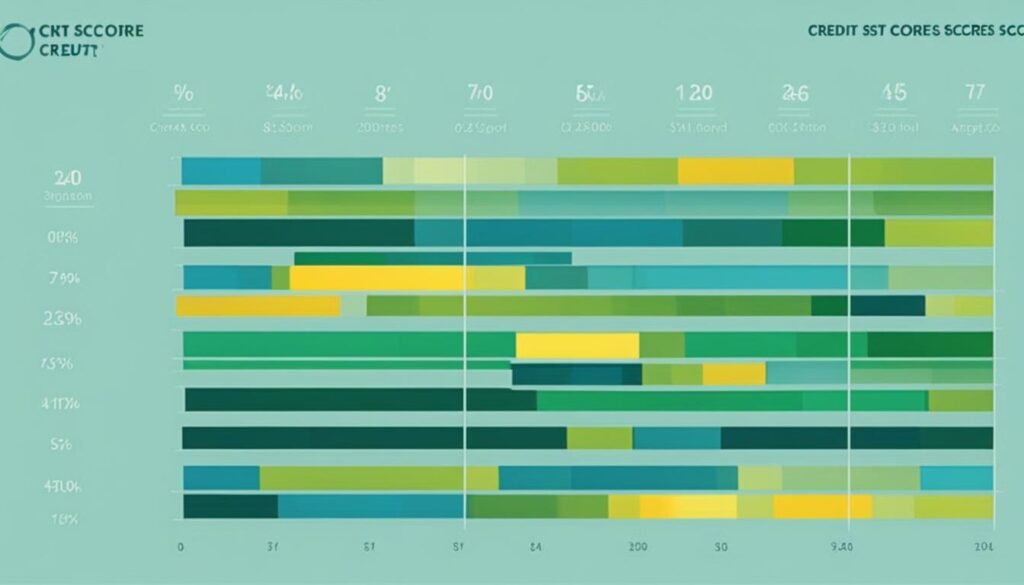Welcome to our comprehensive guide on finance charges and financial terms. In this article, we will explore the concept of a finance charge and its significance in consumer credit. Understanding finance charges is essential for individuals looking to make informed financial decisions, manage credit effectively, and avoid unnecessary costs.
Key Takeaways:
- A finance charge is the cost of consumer credit, encompassing interest rates, fees, and other charges associated with borrowing money or using credit cards.
- Finance charges play a vital role in determining the true cost of credit and are regulated by the Truth in Lending Act.
- Types of finance charges include interest charges, late fees, and other fees imposed by creditors.
- Understanding finance charges helps individuals calculate the total amount they will pay for borrowing money and make informed financial decisions.
- Credit scores play a significant role in determining finance charges, with higher scores generally resulting in lower rates.
What is a Finance Charge?
A finance charge is the cost of consumer credit, encompassing all charges associated with borrowing money or using credit cards. It includes the interest rate, line of credit, and other fees imposed by the creditor as a condition of extending credit. The finance charge is the total amount of interest and fees paid by the consumer to borrow money, and it is crucial for borrowers to understand these charges to make informed financial decisions.
When borrowing money or using credit cards, consumers incur various costs in addition to the principal amount. These costs are known as finance charges and are designed to compensate the lender for the risk involved in extending credit. The finance charge is calculated based on the interest rate, the outstanding balance, and any additional fees or charges imposed by the creditor.
For example, if an individual borrows $10,000 at an annual interest rate of 5% and has a repayment period of one year, the finance charge would amount to $500. This includes the $500 in interest paid over the year. However, if there are additional fees, such as an origination fee or an annual fee for a credit card, those would also be included in the finance charge. It is important for borrowers to carefully review the terms and conditions of any credit agreement to understand the full extent of the finance charge.
| Finance Charge Components | Explanation |
|---|---|
| Interest Rate | The percentage of the borrowed amount that is charged as interest over a specific period of time. |
| Line of Credit | The maximum amount of credit that a lender is willing to extend to a borrower. |
| Additional Fees | Other charges imposed by the creditor, such as origination fees, annual fees, or late payment fees. |
Understanding the finance charge is essential for borrowers to evaluate the true cost of credit and compare different borrowing options. By considering the interest rate, line of credit, and any additional fees, individuals can make informed decisions that align with their financial goals and capabilities.
Types of Finance Charges
When it comes to borrowing money or using credit cards, there are different types of finance charges that consumers should be aware of. Understanding these charges is crucial to managing credit effectively and avoiding unnecessary costs. Let’s take a closer look at the main types of finance charges:
Interest Charges
Interest charges are one of the most common types of finance charges. These charges occur when a consumer borrows money on credit and pays back the principal amount plus interest over time. The interest rate determines how much the borrower will pay in interest, and it is essential to carefully consider this rate when taking on any type of credit. Interest charges can significantly impact the total cost of borrowing and should be taken into account when making financial decisions.
Late Fees
Late fees are another type of finance charge that consumers should be aware of. These fees are incurred when a payment is not made by the due date specified in the credit agreement. Late fees can vary depending on the creditor and the specific terms of the credit agreement. It is important to make payments on time to avoid these charges and maintain a good credit history. Late fees can add up quickly and increase the overall cost of borrowing, so it is crucial to be diligent about meeting payment deadlines.
Other Fees
In addition to interest charges and late fees, there may be other fees associated with credit transactions. These fees can include things like annual fees, balance transfer fees, and cash advance fees. It is important to carefully review the terms of any credit agreement to understand what additional fees may be imposed. Being aware of these charges can help consumers make informed decisions and avoid unexpected costs.
Understanding the different types of finance charges is an essential part of managing credit effectively. By being aware of these charges and considering them when making financial decisions, consumers can minimize costs and avoid unnecessary expenses.
Regulations on Finance Charges
The finance charge is an essential component of consumer credit and is regulated by the Truth in Lending Act (TILA) enacted by the Consumer Financial Protection Bureau (CFPB). These regulations aim to ensure transparency in lending practices and protect consumers from unfair treatment.
Under TILA, creditors are required to provide clear and accurate information about the finance charge, including the annual percentage rate (APR), to consumers. This enables individuals to compare the costs of different credit options and make informed decisions. The finance charge, which encompasses interest rates, fees, and other charges, plays a significant role in determining the total cost of borrowing.
The Consumer Financial Protection Bureau (CFPB) oversees the implementation and enforcement of TILA. The bureau works to protect consumers in the financial marketplace by enforcing fair lending practices and providing educational resources. Individuals can visit the CFPB’s website for more information on finance charges, their rights as consumers, and how to file complaints if they believe they have been subjected to unfair practices.
The Role of the Truth in Lending Act (TILA) and the Consumer Financial Protection Bureau (CFPB)
TILA and the CFPB play a crucial role in regulating finance charges and promoting transparency in lending practices. These regulations mandate clear disclosure of finance charges to consumers, protecting them from unfair lending practices and enabling them to make informed financial decisions.
The Importance of Understanding Finance Charge Regulations
- Transparency: Finance charge regulations ensure that consumers have access to clear and accurate information about the true cost of credit.
- Comparison: By disclosing finance charges, individuals can compare different credit options and choose the one that best suits their needs.
- Consumer Protection: TILA and the CFPB work together to protect consumers from unfair lending practices and promote fair treatment in the financial marketplace.
Calculating Finance Charges
When it comes to understanding the true cost of borrowing money, calculating finance charges is a crucial step. Finance charges can vary based on factors such as the total amount borrowed, the interest rate, and the repayment period. To accurately determine the finance charges, borrowers need to consider these key elements.
First and foremost, the total amount borrowed plays a significant role in calculating finance charges. The higher the amount borrowed, the higher the finance charges are likely to be. It is important for borrowers to carefully assess their financial needs and borrow only what is necessary to avoid unnecessary costs.
The due date also plays a crucial role in determining finance charges. Late payments may result in additional fees and increased costs. It is essential for borrowers to make timely payments to avoid unnecessary charges and to maintain a good credit history.
Lastly, the interest rate and repayment period are essential factors in finance charge calculations. Higher interest rates and longer repayment periods can result in higher finance charges. Borrowers should carefully review the terms and conditions of their loan or credit card agreement to understand how these factors affect the total cost of borrowing.
Calculating finance charges can be complex, but understanding the key elements involved can help borrowers make informed financial decisions and manage their credit effectively.
Example Calculation:
| Total Amount Borrowed | Interest Rate | Repayment Period | Finance Charge |
|---|---|---|---|
| $10,000 | 5% | 1 year | $500 |
| $20,000 | 8% | 2 years | $3,200 |
| $5,000 | 10% | 6 months | $250 |
Table: Example of finance charges for different loan scenarios. The finance charge is calculated based on the total amount borrowed, interest rate, and repayment period. It is important for borrowers to carefully consider these factors before entering into a loan agreement to fully understand the cost of borrowing.
By understanding how finance charges are calculated and considering factors such as the total amount borrowed, due date, and interest rate, borrowers can make informed decisions and effectively manage their credit to minimize unnecessary costs.
Examples of Finance Charges
Understanding finance charges is essential for individuals to manage their credit effectively and make informed financial decisions. Here are some examples of common finance charges that consumers may encounter:
1. Credit Card Interest
One of the most common finance charges is the interest applied to credit card balances. When consumers carry a balance on their credit cards, interest is charged based on the outstanding amount. This finance charge can vary depending on the credit card’s annual percentage rate (APR) and the repayment terms.
2. Late Payment Fees
Another example of a finance charge is a late payment fee. If a consumer fails to make at least the minimum required payment by the due date, the credit card issuer may impose a late payment fee. This charge is an additional cost that can be incurred on top of the interest already being charged on the outstanding balance.
3. Balance Transfer Fees
Some credit card issuers offer balance transfer options that allow consumers to transfer their existing credit card balances to a new card with a lower interest rate or promotional period. However, there may be a finance charge in the form of a balance transfer fee, usually a percentage of the amount transferred. It’s important to consider this fee when evaluating whether a balance transfer is cost-effective.
These are just a few examples of finance charges that consumers may encounter. It’s essential to review the terms and conditions of credit agreements and understand all the potential charges to make informed financial decisions and effectively manage credit.
Table: Examples of Finance Charges
| Finance Charge Type | Description |
|---|---|
| Credit Card Interest | Interest charged on credit card balances |
| Late Payment Fees | Fees imposed for not making timely payments |
| Balance Transfer Fees | Fees for transferring credit card balances to a new card |
| Annual Fees | Fees charged annually for credit card membership |
| Overlimit Fees | Fees imposed when a credit card balance exceeds the credit limit |
It’s important to note that finance charges may vary depending on the creditor, credit product, and individual circumstances. Consumers should carefully review their credit agreements and consult with financial professionals if needed to fully understand the finance charges they may incur.
Avoiding Finance Charges
While finance charges are an inevitable part of borrowing money, there are strategies to minimize or avoid them. By understanding the factors that contribute to finance charges, individuals can make informed decisions and reduce the cost of credit.
One effective way to avoid finance charges is to pay off the credit card balance in full and on time each month. By doing so, individuals can avoid interest charges altogether. It is important to note that even if the creditor offers a grace period, interest may still accrue on new purchases if the previous balance is not paid in full.
Another way to avoid finance charges is to utilize interest-free promotional periods offered by credit card companies. These periods typically range from 6 to 18 months, during which no interest is charged on new purchases. By taking advantage of these promotions, individuals can delay interest charges and potentially save money.
Lastly, individuals can avoid finance charges by exploring alternative financing options. For example, opting for a personal loan with a lower interest rate than credit cards can help reduce the overall cost of borrowing. Additionally, negotiating lower interest rates with creditors or consolidating debt through a balance transfer can also be effective strategies to minimize finance charges.
Summary:
- Avoidance of finance charges is possible by paying off credit card balances in full and on time.
- Interest-free promotional periods offered by credit card companies can be utilized to delay interest charges.
- Exploring alternative financing options and negotiating lower interest rates can help minimize finance charges.
Table: Comparison of Strategies to Avoid Finance Charges
| Strategies | Advantages | Disadvantages |
|---|---|---|
| Paying off credit card balances in full and on time | Avoids interest charges completely | Requires discipline and may not be feasible for everyone |
| Utilizing interest-free promotional periods | Delays interest charges and provides temporary relief | May be limited to specific credit cards and promotional periods |
| Exploring alternative financing options | Can result in lower interest rates | Requires research and may involve additional fees |
| Negotiating lower interest rates | Reduces finance charges and saves money | Success depends on creditor’s willingness to negotiate |
Understanding Credit Scores and Finance Charges
Credit scores are a significant factor in determining finance charges imposed by credit card companies and lenders. A credit score is a numerical representation of an individual’s creditworthiness and is used by lenders to assess the risk of lending money. Higher credit scores generally indicate a lower perceived risk and can result in lower interest rates and finance charges.
Lenders charge interest as a way to compensate for the risk they undertake when lending money. The interest rate assigned to an individual’s credit account is based on their credit score and other factors such as payment history and outstanding debts. A higher credit score may lead to lower interest rates, which in turn reduces the overall finance charges incurred by the borrower.
Credit card companies also consider an individual’s credit score when determining the annual percentage rate (APR) for credit card transactions. The APR represents the cost of borrowing money and includes interest charges and other fees. Individuals with higher credit scores are likely to be offered credit cards with lower APRs, resulting in lower finance charges on their card balances.
Benefits of a High Credit Score:
- Lower interest rates on loans and credit cards.
- Reduced finance charges on outstanding balances.
- Access to credit with favorable terms and conditions.
“Maintaining a high credit score is crucial for minimizing finance charges and accessing affordable credit options,” says Jane Smith, financial advisor at Credit Solutions Inc.
It is essential for individuals to understand the impact of credit scores on finance charges and take proactive steps to improve their scores. This includes making timely payments, keeping credit card balances low, and avoiding excessive debt accumulation. By managing credit responsibly and maintaining a good credit score, individuals can minimize the impact of finance charges and save money in the long run.
| Finance Charge | Credit Score Range |
|---|---|
| $500 | 300-579 |
| $400 | 580-669 |
| $300 | 670-739 |
| $200 | 740-799 |
| $100 | 800-850 |
The Role of Finance Charges in Financial Institutions
Financial institutions, such as banks and credit unions, rely on finance charges as a revenue stream. These charges, which are included in the finance charge, serve as a source of income for financial institutions and enable them to provide a wide range of financial services to consumers. By charging interest rates and other fees, financial institutions are able to cover their operating costs and generate profits.
Finance charges play a crucial role in the sustainability and profitability of financial institutions. They allow these institutions to lend money and extend credit to individuals and businesses, thereby stimulating economic growth. The income generated from finance charges not only supports the operations of financial institutions but also enables them to offer competitive interest rates and terms to borrowers.
In addition to interest charges, finance charges may also include fees for services such as late payments or overdrafts. These fees contribute to the overall revenue of financial institutions and help them maintain the infrastructure necessary to provide reliable and efficient financial services.
Overall, finance charges play a vital role in the functioning of financial institutions. They enable these institutions to meet the financial needs of consumers and businesses while ensuring their own sustainability and growth. By understanding the role of finance charges, consumers can make informed decisions about their borrowing and credit usage, taking into account the costs associated with these services.
Role of Government and Consumer Protection
In the realm of consumer credit, the government plays a vital role in protecting the interests of individuals and ensuring fair lending practices. One significant piece of legislation that upholds consumer rights is the Truth in Lending Act (TILA). Enacted by the Consumer Financial Protection Bureau (CFPB), TILA mandates clear and accurate disclosure of finance charges to consumers, ensuring transparency in credit transactions.
TILA requires creditors to provide comprehensive information about finance charges, including the annual percentage rate (APR), to empower consumers to make informed decisions. With this knowledge, individuals can compare the costs of different credit options and choose the most suitable one for their financial needs. By regulating and monitoring finance charges, the government enables consumers to have a clear understanding of credit terms and protects them from unethical lending practices.
The role of government and consumer protection agencies is not just limited to enforcing regulations. They also serve as a resource for individuals seeking guidance or assistance with credit-related matters. The CFPB, in particular, provides educational resources and tools to help consumers make informed financial decisions. By promoting financial literacy and consumer awareness, the government aims to empower individuals in managing their finances and avoiding excessive finance charges.
Also Read : Ever Wondered How Heights Finance Can Skyrocket Your Wealth?
Conclusion
In conclusion, understanding finance charges is crucial for individuals to grasp the true cost of credit. Finance charges encompass the interest rates, fees, and other charges associated with borrowing money or using credit cards. By being aware of these charges, consumers can make informed financial decisions and effectively manage their credit.
It is important to note that finance charges are regulated by the Truth in Lending Act (TILA), which ensures transparency in lending practices and protects consumers. Through clear disclosure of finance charges, individuals can compare the costs of different credit options and exercise their rights as consumers.
By proactively managing credit and seeking guidance from financial professionals when needed, individuals can minimize costs, avoid unnecessary fees, and maintain their financial well-being. Understanding finance charges empowers consumers to navigate the complexities of credit and make sound financial choices.
FAQs
Q: What is a finance charge?
A: A finance charge is a fee assessed by a creditor for extending credit to a borrower, and it is generally expressed as an annual percentage rate (APR).
Q: How is the finance charge calculated on a credit card bill?
A: The finance charge on a credit card bill is calculated based on the outstanding balance and the applicable interest rate. It may also include any charge payable directly or indirectly by the consumer and imposed directly or indirectly by the creditor as an incident to or a condition of the extension of credit.
Q: What factors determine the total finance charge on a loan or credit transaction?
A: The total finance charge is influenced by various factors, including the interest rate, the amount of credit extended, and any additional fees or charges associated with the credit transaction.
Q: Is the finance charge the same for all types of credit transactions?
A: The finance charge can vary depending on the type of credit transaction. For example, an auto loan and a credit card bill may have different methods of computing the finance charge due to varying terms and conditions.
Q: What are some items excluded from the finance charge?
A: Certain items, such as insurance premiums or charges for a specific service, may be excluded from the finance charge. These exclusions are outlined in the regulations governing finance charges.
Q: How does the imposition of a finance charge affect the monthly payment?
A: The imposition of the finance charge increases the total amount owed, leading to a higher monthly payment to cover the principal amount along with the accrued finance charges.
Q: Why is it important to understand the finance charge on credit transactions?
A: Understanding the finance charge is essential for consumers to make informed financial decisions, as it directly impacts the cost of credit and the overall repayment obligations associated with a loan or credit card balance.
Q: Can a finance charge be imposed on accounts without a credit feature?
A: Yes, a finance charge may be imposed on accounts without a credit feature if the account is accessed through a covered separate credit feature accessible by a credit card as defined in the regulations.
Q: What is the basis for imposing a finance charge on open-end credit?
A: The basis for imposing a finance charge on open-end credit is determined by the terms and conditions specified in the credit agreement, and it is essential for consumers to review and understand these terms before using the credit facility.
Q: How can consumers avoid excessive finance charges?
A: Consumers can avoid excessive finance charges by making timely payments, understanding the terms of their credit agreements, and effectively managing their credit balances to minimize the impact of finance charges on their overall financial well-being.
Source Links
- https://www.consumerfinance.gov/consumer-tools/educator-tools/youth-financial-education/glossary/
- https://www.ecfr.gov/current/title-12/chapter-II/subchapter-A/part-226/subpart-A/section-226.4
- https://extension.psu.edu/cutting-credit-costs-annual-percentage-rates-and-yields







